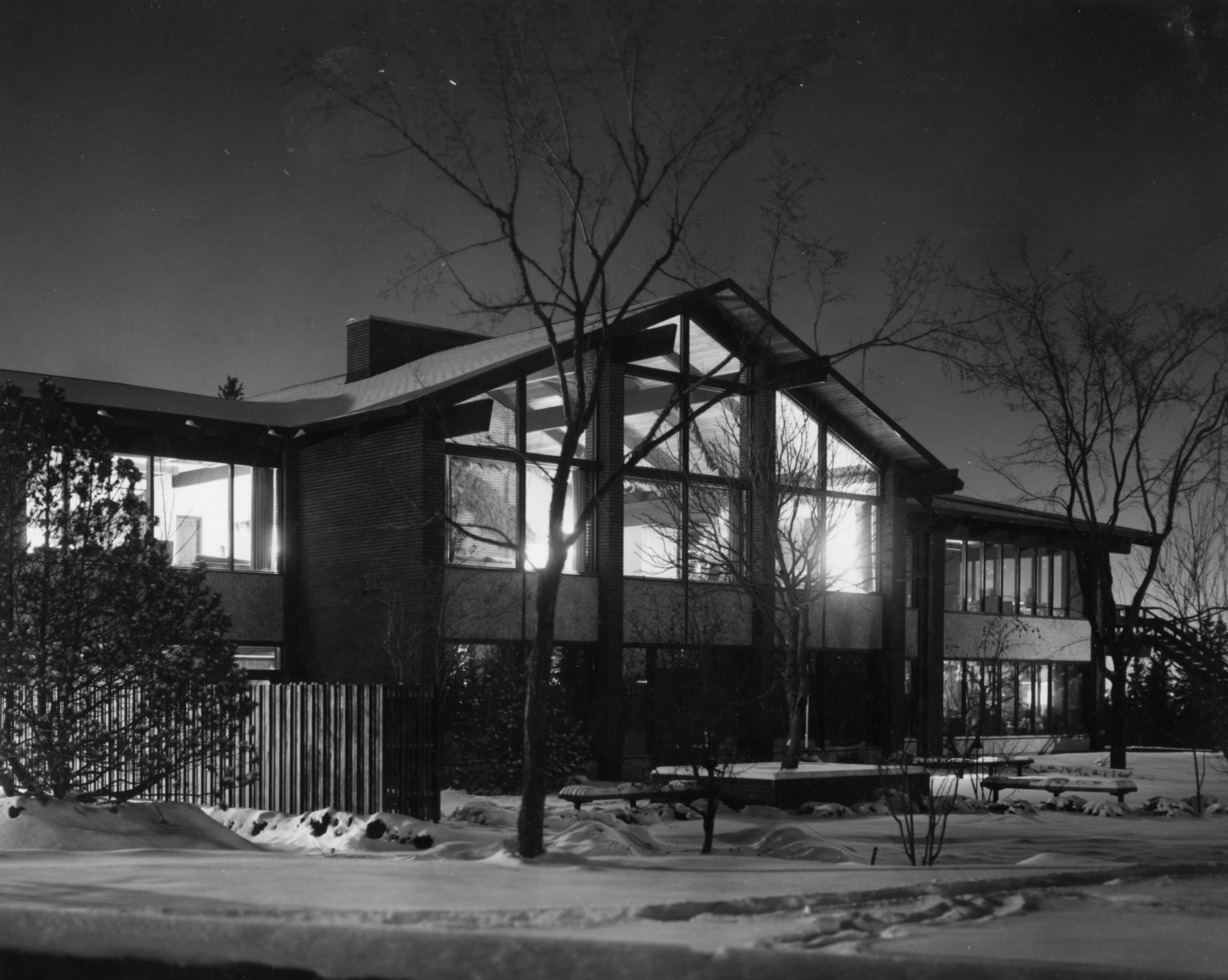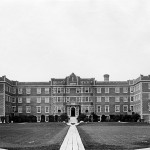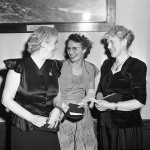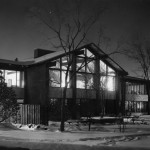As the century continued, Edmonton entered a heyday of its own, including the opening of the University of Alberta in 1908. In 1911, with the institution going strong, the university moved from its temporary location on the top floor of the Strathcona Collegiate Institute (now Old Scona High School) to the newly-built Athabasca Hall. The hall was situated on River Lot 5, a 258-acre plot on which the U of A campus now sits.
This new sense of permanence meant that students and faculty alike now felt free to make firmer plans for what they wanted the U of A to be. On the evening on Saturday, April 29, 1911, a group of six faculty members met at Modern Languages professor Dr. W.A.R. Kerr’s home to discuss the formation of a faculty association to promote friendship as well as mutually interesting academic pursuits. In addition to Kerr, the founding members were Dr. E.K. Broadus, an English professor; Dr. Barker Fairlie, a lecturer in Modern Languages; Dr. E.W. Sheldon, an assistant professor of mathematics; Mr. Cecil Race, the university’s librarian and registrar; and Dr. Oliver Edwards, an assistant professor of mathematics and an engineering lecturer (and also, coincidentally, the husband of women’s rights activist Henrietta Muir Edwards).
In their first year, the group drafted a constitution and bylaws outlining its purpose. The first bylaw gave the group the name of “University Club,” but this was changed to “Faculty Club” later in the year. The second bylaw set the club’s objective, “to promote by the reading and discussion of original papers at regular meetings social and intellectual intercourse amongst its members”. The fees were set at $2.00/year, and the club met four times each term.
A club member described their activities: “Smoking is permitted throughout the evening and tea, sandwiches, cake and apples are served at 10:30, after which the discussion frequently lasts until midnight.”. Despite developing in the milieu of gentlemen’s clubs during this period, the Faculty Club was notably tamer than non-academic clubs of the same era. Members and visitors often presented papers to the rest of the club; one noted in the records was entitled, “Is the Idea of Progress Valid?”, with the speaker stating that progress in one direction meant other forms of progress might be stunted–he claimed, for example, that progress in science came at the expense of progress in art, music, and literature. Further, he claimed that a “scientific spirit” was not common to all races and thus could not be the basis for establishing world peace. The club secretary reported that this particular discussion had the scientists “up at arms and a lively discussion followed”. Not all paper topics were so serious–other notable topics from this period include the merits of single vs. married life, and a report on the “manner of the fall of buttered bread”.
You may have noticed that all of the original members of the Faculty Club were men. This status was cemented in 1919, when the club voted to change its name to the “Men’s Faculty Club,” just make sure no women had the chance to sneak in there. In December 1923 and January 1924, the club discussed removing “Men’s” from their name, but this was rejected. Further, in the 1930s it was added to the club constitution that “the above clauses shall be interpreted as applying only to men”. It is interesting to note that this was in the wake of the 1929 Person’s Case, when it was clarified and formalised that women counted as legal persons, including in legal contracts and constitutions. The Men’s Faculty Club may have felt the need, then to clarify that their constitution didn’t include persons in general–it just included men.
Alongside these changes, in 1933 the university’s president Dr. Robert Wallace and his wife agreed that a club should be started to promote sociability between wives of the faculty, to be called the Faculty Women’s Club (not the Women’s Faculty Club). The club was also intended for female faculty members, who could not, after all, join the Men’s Faculty Club. The founding officers were Mattie Rutherford, Honorary President; and Mrs. Wallace, Ex Officio to the Executive. It was determined that members could be women staff members, wives of staff, Superintendents of Residences’ wives, and wives of academic officers.
The main activities of the F.W.C. were initially themed teas, with musical selections included chosen by members of the club’s musical committee. As women’s roles changed throughout the 1950s and ‘60s, these gatherings shifted toward more informal activities in response to the preferences of women who were working more and more outside the home and did not necessarily have time for frequent formal gatherings.
The contributions of the Men’s Faculty Club and the Faculty Women’s Club during the Second World War are notable in that they correspond to gendered expectations of the era, highlighting the differing backgrounds and functions of the two clubs. The Men’s Faculty Club responded to a call to universities from the University of Caen, which needed to rebuild its library after it was destroyed along with most of the town. The club sent 500 books, including 24 from mathematics professor E.S. Keeping, which he described as having been written by “recognized authorities but more or less out-of-date”.
In contrast, the Faculty Women’s Club participated in a multitude of more traditionally feminine wartime activities–they formed splinter groups to roll bandages and knit socks with the Red Cross, make quilts for needy Russians, help in canteens, and invite soldiers home for hot meals. They also set up committees to write to all U of A staff members who were overseas, purchase Christmas gifts for children of staff members away at war, and write to bereaved staff and staff families.
The Faculty Women’s Club identified strongly as a group–in 1956, it was proposed that the Men’s Faculty Club, the Faculty Common Room Committee, and the F.W.C. amalgamate. The F.W.C. refused as they felt that it would “jeopardize F.W.C. identity and incur larger fees”. Un-amalgamated, the Faculty Women’s Club still runs today.
In the late 1950s, it was discussed amongst the growing number of women faculty whether to form a Women’s Faculty Club (not a Faculty Women’s Club–confused yet?). Ultimately, though, the 1959 the constitution, and the name, of the Men’s Faculty Club were amended to include women. In addition to the Faculty Women’s Club, the Faculty Club continues to run today, and welcomes academic as well as associate members of all genders.
Sally Scott © 2016




